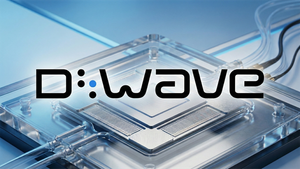 Photo from Unsplash
Photo from Unsplash
Originally Posted On: https://www.advisedskills.com/about/news/393-the-role-of-agile-release-management-in-continuous-delivery
In the modern, swiftly evolving tech landscape, businesses are constantly seeking methodologies that ensure both efficiency and excellence in software delivery. Step in Agile Release Management (ARM) – an approach tailored to facilitate smooth software rollouts without compromising on product quality. With the ever-changing nature of businesses, ARM’s significance in the realm of continuous delivery is increasingly underscored.
Keyword(s): agile release management, continuous delivery
What is Agile Release Management?
Agile Release Management (1)(ARM) serves as a cornerstone within the broader Agile framework, acting as the orchestrator of software deployments. At its essence, ARM encompasses the meticulous process of planning, scheduling, coordinating, and supervising releases within an Agile ecosystem.
In the traditional software development world, releases were often infrequent, bulky, and fraught with unpredictability. The inception of Agile shifted this paradigm, advocating for smaller, more frequent releases, underpinned by real-time feedback and iterative development.
ARM harmoniously merges these Agile values. The methodology’s core tenets—collaboration, adaptability, and customer feedback—are seamlessly woven into ARM’s fabric. This integration makes sure that software updates are not only about giving new features. They are also about making sure these features are given on time, meet quality standards, and, importantly, match user needs.
By emphasizing open communication among cross-functional teams, ARM breaks down silos. It facilitates a more transparent, responsive, and adaptive release process. Teams work together to create great software that meets user needs and works well.
ARM helps organizations achieve excellent software releases in the fast-changing digital age. It does this by combining speed and quality. ARM also guides organizations through shifting user expectations and market dynamics.
The Need for Agile in Release Management
In software development, companies typically release software with big launches but then keep it unchanged for a long time. The “waterfall” model best exemplified these traditional release methods, which involved sporadic, vast, and monolithic releases.
The situation was familiar. Long timelines caused delays. Last-minute changes caused problems. Bugs appeared after release. They caused chaos and loss of trust.
Such an approach, while methodical, suffered from inherent inflexibility. The longer lead times meant that by the time software was released, market conditions might have changed, or user needs could have evolved.
Adapting to feedback? Given the considerable gaps between releases, any feedback loop was long, making swift course corrections nearly impossible. This approach didn’t just risk product relevance—it also placed undue strain on development and operations teams, often leading to burnout and diminished product quality.
Enter Agile methodologies, a game-changer in the truest sense. The Agile ethos is centered on adaptability, user feedback, and shorter development cycles.
Instead of betting everything on one major release (2), Agile promotes the idea of smaller, incremental releases. Each release becomes an opportunity to learn from real-world feedback and make improvements. Such a model not only reduces risk but also allows organizations to pivot rapidly in response to market shifts or user feedback.
Agile Release Management (ARM) emerges as the nexus between the world of Agile development and the intricate dance of software release. It combines the benefits of Agile and adds structure and predictability for successful software deployments. ARM changes how software is released, making it more user-focused and continuous.
Delving Deeper: Benefits of ARM in Continuous Delivery
- Faster Time to Market: With ARM, products and features are released faster and more frequently. This accelerated pace means businesses can respond more quickly to market changes and customer feedback.
- Increased Collaboration: Cross-functional teams come together in the ARM process, leading to better communication and collaboration. This cohesive approach ensures that each release is well-coordinated and aligned with the organization’s goals.
- Enhanced Quality: Regular iterations and feedback loops allow for continuous testing and refinement. This iterative approach ensures that each release is of optimal quality and meets user expectations.
- Risk Mitigation: Regular, smaller releases mean that any potential issues are identified and addressed quickly, significantly reducing the risk of major defects or operational problems.
Challenges in ARM and the Importance of Training
However, ARM isn’t without its challenges. As organizations grow, the complexities of managing releases across larger teams, diverse locations, and multiple products can become daunting.
Here is where structured training, such as the SAFe Agilist (SA) from Scaled Agile, becomes invaluable. This specific training provides insights into scaling Agile practices, ensuring that the principles of ARM are consistently applied, even in large-scale environments.
The Future of ARM in a Digital World
As businesses lean more into digital transformation, the demand for efficient, consistent, and high-quality software releases will only grow. ARM, with its emphasis on agility and continuous delivery, will play a pivotal role in meeting these demands.
Using AI, machine learning, and automation can improve ARM’s abilities, making the release process smoother and more efficient.
Conclusion
In the fast-changing technology world, it’s clear that just keeping up is not sufficient. Organizations need to actively aim to be at the forefront. In such a dynamic environment, embracing Agile Release Management (ARM) practices transcends strategic advantage—it becomes an imperative for sustainable growth and innovation.
ARM is the best at coordinating software releases because it values collaboration, adaptability, and quality. It does more than just streamline the release process; it reshapes organizational culture. ARM assists organizations in consistently providing value, comprehending users’ evolving needs, and remaining competitive. This is achieved through the promotion of open communication, iterative development, and user feedback.
ARM ensures businesses keep up with expanding technology boundaries, so they don’t fall behind in the progress. Instead, they occupy the forefront. They are ready to seize new opportunities and confront challenges head-on. They aim to redefine excellence in the digital era.
Ready to transform your organization’s release management framework and keep pace with the digital age’s demands? Dive into the SAFe Agilist (SA) training today. Equip yourself with the tools, knowledge, and strategies to effectively navigate the complexities of large-scale Agile Release Management.
External resources:
1. ServiceNow https://www.servicenow.com/products/itsm/what-is-release-management.html
2. The Free Dictionary https://encyclopedia2.thefreedictionary.com/major+release
![]() Advised Skills Research Team – Blog Author
Advised Skills Research Team – Blog Author
The Advised Skills Research Team is a professional group dedicated to investigating and publishing information on the latest trends in technology and training.
This team delves into emerging advancements to provide valuable insights, empowering individuals and organizations to stay ahead.
Their work significantly contributes to the ever-evolving landscape of technological education and workforce development.
Frequently Asked Questions (FAQs): Agile Release Management
- What is Agile Release Management (ARM)?
ARM is an approach within the Agile framework that focuses on planning, scheduling, coordinating, and supervising software releases. It integrates Agile values of collaboration, adaptability, and customer feedback to ensure timely, consistent, and high-quality software rollouts. - How does ARM differ from traditional release management?
Traditional release management, often associated with the “waterfall” model, is characterized by large, infrequent releases with longer feedback loops. ARM, on the other hand, favors smaller, more frequent releases, allowing for real-time feedback, quick adaptations, and a greater emphasis on collaboration across teams. - Why is there a need to shift from traditional to Agile Release Management?
The traditional approach, due to its inflexibility, often resulted in software that was out-of-sync with current market needs or user requirements by the time of its release. ARM allows organizations to be more responsive to changes, ensuring software remains relevant and meets user expectations more consistently. - How does ARM support Continuous Delivery (CD)?
ARM complements CD by facilitating regular iterations and feedback, promoting improved collaboration across teams, and reducing risks through frequent, smaller releases. This synergy ensures software can be released to production efficiently and with greater reliability. - What challenges might organizations face when implementing ARM?
As organizations grow, managing releases across larger teams or multiple products can become complex. There may also be resistance from teams accustomed to traditional methods. Structured training, like the SAFe Agilist (SA) from Scaled Agile, can provide guidance on effectively navigating these challenges. - How can businesses benefit from adopting ARM in the long run?
Adopting ARM can lead to faster time-to-market, enhanced product quality, reduced risks, and better alignment with user needs. Over time, these benefits can result in increased customer satisfaction, greater competitive advantage, and potential growth in market share.




